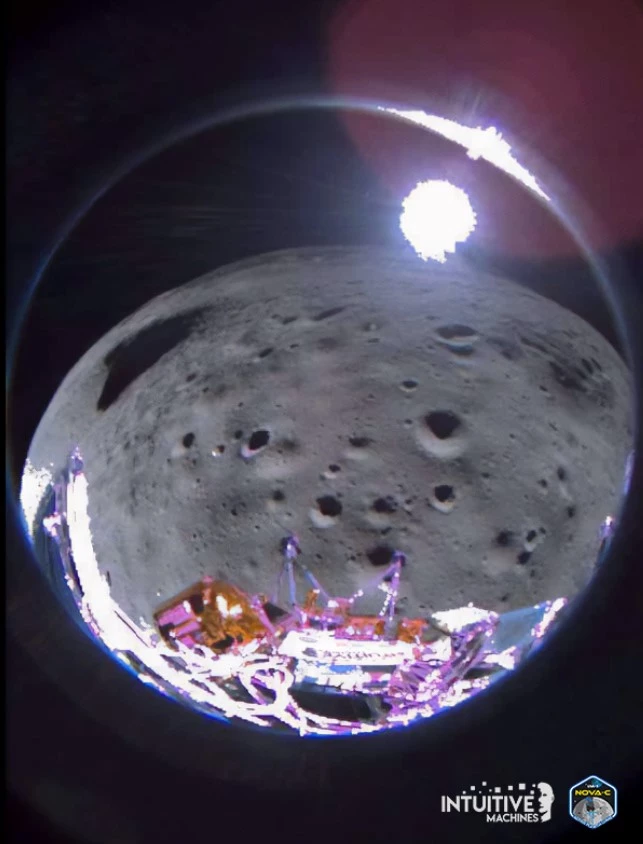The IM-1 Moon landing mission will come to a premature end on Tuesday morning. Intuitive Machines has announced that the Odysseus lander will no longer be able to charge its batteries by February 27 as sunlight stops falling on its solar panels.
Today's announcement is a bittersweet end for a mission that survived tipping over on landing and the failure of a vital navigation system due to human error. When 'Odie' touched down on the Moon on February 22, it did so with the aid of a NASA experimental navigation system that had been patched into the lander's software as the spacecraft approached the Moon.
It was an impressive bit of improvisation, but it turns out that the reason why this had to be done was due to a simple human oversight. The Nova-C class lander's landing navigation system relied on lasers to estimate speed, direction, and position. Unfortunately, these lasers posed a hazard to the eyes of prelaunch technicians, so the system couldn't be programmed to activate automatically. Instead, a physical switch had to be thrown before launch.
But, it wasn't.

Despite these setbacks, the flight engineers have managed to maintain communications with Odysseus and have retrieved new images from the lander. Some of these were taken by Odie during its lunar approach, and they show nine safe potential landing sites as well as an area with permanently shadowed craters that may contain water ice and other resources.
In addition, NASA's Lunar Reconnaissance Orbiter Camera team have spied Odysseus on the Moon's surface and conformed its position as 80.13° S and 1.44° E, which is 1.5 km (one mile) from its intended Malapert A landing site – the closest landing yet to the lunar south pole.
Though the IM-1 mission has been less than perfect and is ending over a week earlier than hoped, Intuitive Machines has emphasized that its landers are not one-off exploration vehicles. They are designed to be commercial workhorses for carrying payloads for government and private customers to the Moon at much lower costs than NASA vehicles, so the loss of one spacecraft on one mission is seen as an acceptable trade-off.
Source: Intuitive Machines






